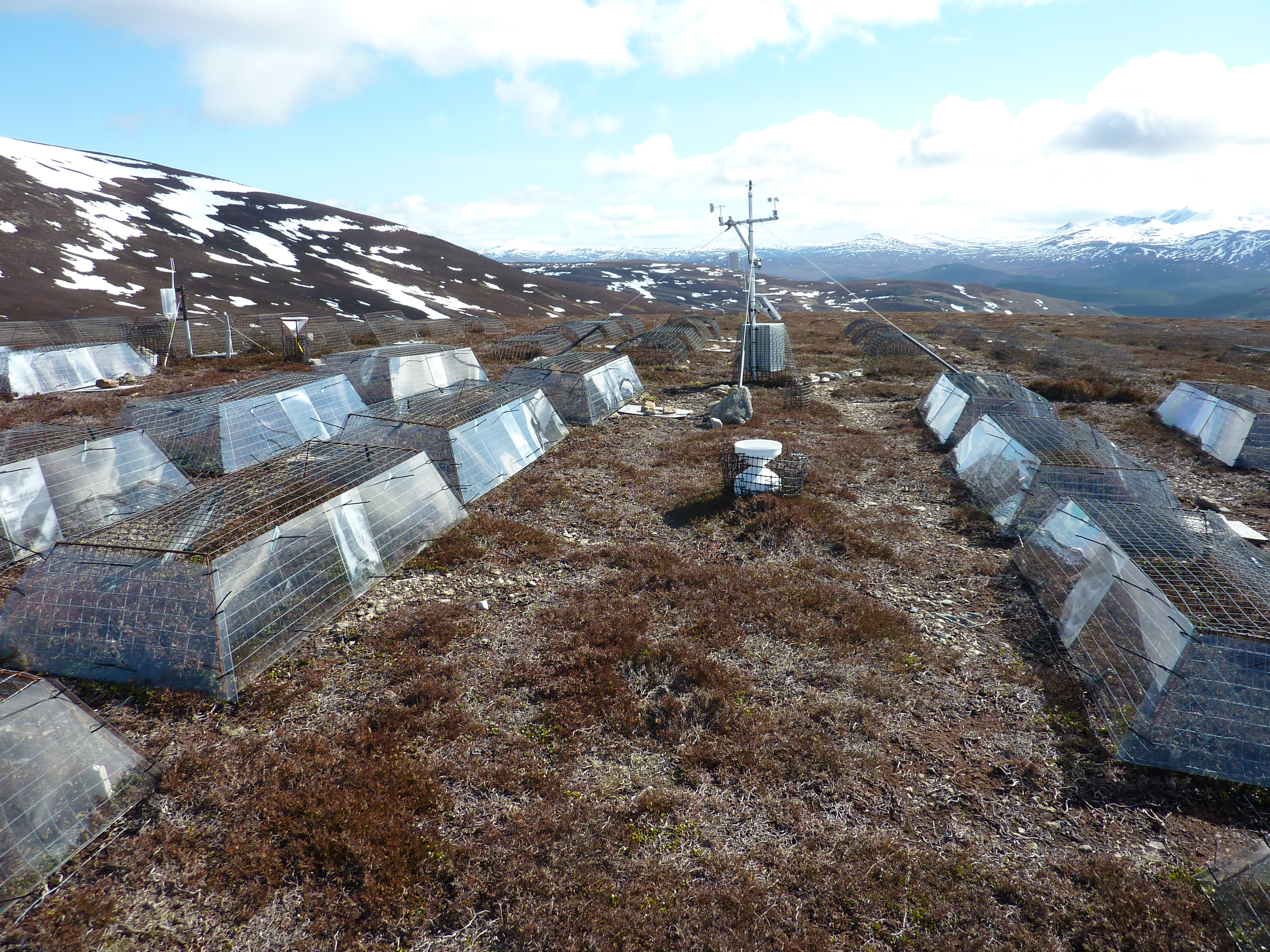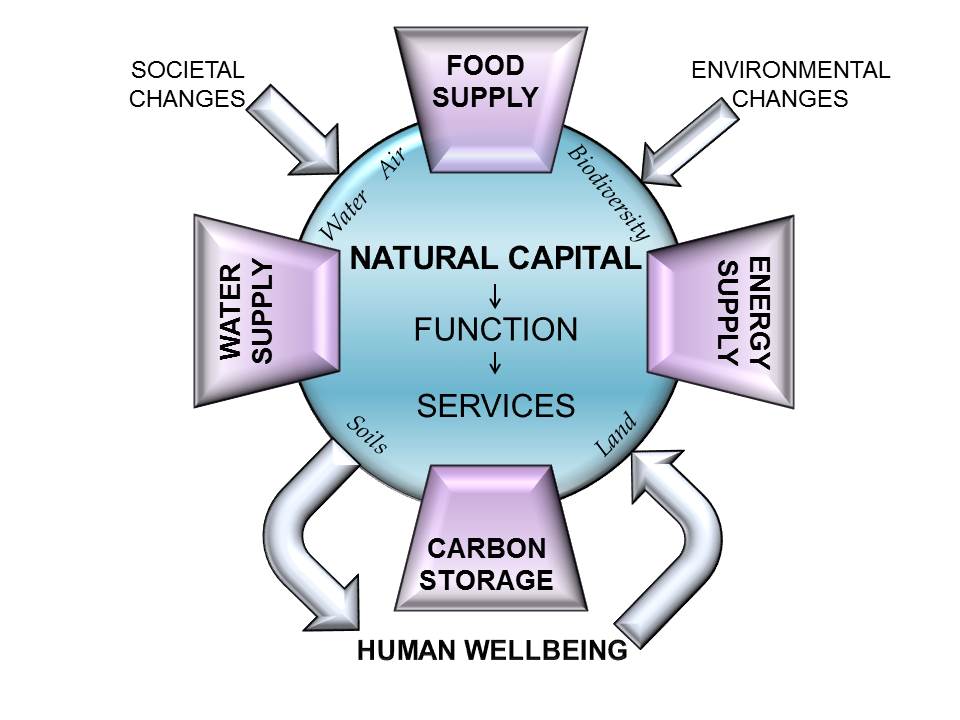|
Biomathematics And Statistics Scotland
The James Hutton Institute is an interdisciplinary scientific research institute in Scotland established in 2011, through the merger of Scottish Crop Research Institute (SCRI) and the Macaulay Land Use Research Institute. The institute, named after Scottish geologist James Hutton, one of the leading figures of the Scottish Enlightenment, combines existing Scottish expertise in agricultural research, soils and land use, and works in fields including food and energy security, biodiversity, and climate change. With more than 600 employees, the institute is among the largest research centres in the UK. It is a registered charity under Scottish law. The institute has its main offices in Aberdeen and Dundee with farms and field research stations at Glensaugh and Balruddery. The Dundee site also hosts the Plant Sciences department of the University of Dundee. The James Hutton Institute also formally contains Biomathematics and Statistics Scotland (BioSS) which has staff based ... [...More Info...] [...Related Items...] OR: [Wikipedia] [Google] [Baidu] |
Macaulay Institute
The Macaulay Institute, formally the Macaulay Land Use Research Institute and sometimes referred to simply as The Macaulay, is a research institute based at Aberdeen in Scotland, which is now part of the James Hutton Institute. Its work covers aspects such as landscape, soil and water conservation and climate change. History The Macaulay Institute for Soil Research was founded in 1930. A benefaction of £10,000 from one of Canada's Scottish sons, Thomas Bassett Macaulay, of the Sun Life Assurance Company of Canada was used to purchase 50 acres and buildings at Craigiebuckler in Aberdeen. Macaulay's aim was to improve the productivity of Scottish agriculture. Thomas Bassett Macaulay was a descendant of Macaulay family of Lewis, who were centred on the Hebridean Isle of Lewis. He was true to his Hebridean roots throughout his life, often giving large donations to Lewis, which funded various projects including a new library and a new wing at Lewis hospital. The new Macaulay ... [...More Info...] [...Related Items...] OR: [Wikipedia] [Google] [Baidu] |
The Scotsman
''The Scotsman'' is a Scottish compact newspaper and daily news website headquartered in Edinburgh. First established as a radical political paper in 1817, it began daily publication in 1855 and remained a broadsheet until August 2004. Its parent company, JPIMedia, also publishes the ''Edinburgh Evening News''. It had an audited print circulation of 16,349 for July to December 2018. Its website, Scotsman.com, had an average of 138,000 unique visitors a day as of 2017. The title celebrated its bicentenary on 25 January 2017. History ''The Scotsman'' was launched in 1817 as a liberal weekly newspaper by lawyer William Ritchie and customs official Charles Maclaren in response to the "unblushing subservience" of competing newspapers to the Edinburgh establishment. The paper was pledged to "impartiality, firmness and independence". After the abolition of newspaper stamp tax in Scotland in 1855, ''The Scotsman'' was relaunched as a daily newspaper priced at 1d and a circul ... [...More Info...] [...Related Items...] OR: [Wikipedia] [Google] [Baidu] |
2011 Establishments In Scotland
Eleven or 11 may refer to: *11 (number), the natural number following 10 and preceding 12 * one of the years 11 BC, AD 11, 1911, 2011, or any year ending in 11 Literature * ''Eleven'' (novel), a 2006 novel by British author David Llewellyn *''Eleven'', a 1970 collection of short stories by Patricia Highsmith *''Eleven'', a 2004 children's novel in The Winnie Years by Lauren Myracle *''Eleven'', a 2008 children's novel by Patricia Reilly Giff *''Eleven'', a short story by Sandra Cisneros Music *Eleven (band), an American rock band * Eleven: A Music Company, an Australian record label * Up to eleven, an idiom from popular culture, coined in the movie ''This Is Spinal Tap'' Albums * ''11'' (The Smithereens album), 1989 * ''11'' (Ua album), 1996 * ''11'' (Bryan Adams album), 2008 * ''11'' (Sault album), 2022 * ''Eleven'' (Harry Connick, Jr. album), 1992 * ''Eleven'' (22-Pistepirkko album), 1998 * ''Eleven'' (Sugarcult album), 1999 * ''Eleven'' (B'z album), 2000 * ''Eleven'' (Ream ... [...More Info...] [...Related Items...] OR: [Wikipedia] [Google] [Baidu] |
Agricultural Research Institutes In The United Kingdom
Agriculture or farming is the practice of cultivating plants and livestock. Agriculture was the key development in the rise of sedentary human civilization, whereby farming of domesticated species created food surpluses that enabled people to live in cities. The history of agriculture began thousands of years ago. After gathering wild grains beginning at least 105,000 years ago, nascent farmers began to plant them around 11,500 years ago. Sheep, goats, pigs and cattle were domesticated over 10,000 years ago. Plants were independently cultivated in at least 11 regions of the world. Industrial agriculture based on large-scale monoculture in the twentieth century came to dominate agricultural output, though about 2 billion people still depended on subsistence agriculture. The major agricultural products can be broadly grouped into foods, fibers, fuels, and raw materials (such as rubber). Food classes include cereals (grains), vegetables, fruits, cooking oils, meat, milk, e ... [...More Info...] [...Related Items...] OR: [Wikipedia] [Google] [Baidu] |
Environmental Research Institutes
A biophysical environment is a biotic and abiotic surrounding of an organism or population, and consequently includes the factors that have an influence in their survival, development, and evolution. A biophysical environment can vary in scale from microscopic to global in extent. It can also be subdivided according to its attributes. Examples include the marine environment, the atmospheric environment and the terrestrial environment. The number of biophysical environments is countless, given that each living organism has its own environment. The term ''environment'' can refer to a singular global environment in relation to humanity, or a local biophysical environment, e.g. the UK's Environment Agency. Life-environment interaction All life that has survived must have adapted to the conditions of its environment. Temperature, light, humidity, soil nutrients, etc., all influence the species within an environment. However, life in turn modifies, in various forms, its conditions. S ... [...More Info...] [...Related Items...] OR: [Wikipedia] [Google] [Baidu] |
Research Institutes In Scotland
Research is " creative and systematic work undertaken to increase the stock of knowledge". It involves the collection, organization and analysis of evidence to increase understanding of a topic, characterized by a particular attentiveness to controlling sources of bias and error. These activities are characterized by accounting and controlling for biases. A research project may be an expansion on past work in the field. To test the validity of instruments, procedures, or experiments, research may replicate elements of prior projects or the project as a whole. The primary purposes of basic research (as opposed to applied research) are documentation, discovery, interpretation, and the research and development (R&D) of methods and systems for the advancement of human knowledge. Approaches to research depend on epistemologies, which vary considerably both within and between humanities and sciences. There are several forms of research: scientific, humanities, artistic, econom ... [...More Info...] [...Related Items...] OR: [Wikipedia] [Google] [Baidu] |
Agricultural Organisations Based In Scotland
Agriculture or farming is the practice of cultivating plants and livestock. Agriculture was the key development in the rise of sedentary human civilization, whereby farming of domesticated species created food surpluses that enabled people to live in cities. The history of agriculture began thousands of years ago. After gathering wild grains beginning at least 105,000 years ago, nascent farmers began to plant them around 11,500 years ago. Sheep, goats, pigs and cattle were domesticated over 10,000 years ago. Plants were independently cultivated in at least 11 regions of the world. Industrial agriculture based on large-scale monoculture in the twentieth century came to dominate agricultural output, though about 2 billion people still depended on subsistence agriculture. The major agricultural products can be broadly grouped into foods, fibers, fuels, and raw materials (such as rubber). Food classes include cereals (grains), vegetables, fruits, cooking oils, meat, milk, ... [...More Info...] [...Related Items...] OR: [Wikipedia] [Google] [Baidu] |
Natural Capital
Natural capital is the world's stock of natural resources, which includes geology, soils, air, water and all living organisms. Some natural capital assets provide people with free goods and services, often called ecosystem services. All of these underpin our economy and society, and thus make human life possible. It is an extension of the economic notion of capital (resources which enable the production of more resources) to goods and services provided by the natural environment. For example, a well-maintained forest or river may provide an indefinitely sustainable flow of new trees or fish, whereas over-use of those resources may lead to a permanent decline in timber availability or fish stocks. Natural capital also provides people with essential services, like water catchment, erosion control and crop pollination by insects, which in turn ensure the long-term viability of other natural resources. Since the continuous supply of services from the available natural capital as ... [...More Info...] [...Related Items...] OR: [Wikipedia] [Google] [Baidu] |
Natural Capital Initiative
The Natural Capital Initiative (NCI) is a partnership of UK science organisations which promotes and supports decision-making across government, business and the private sector that results in the sustainable management of our natural capital. It is a partnership between three leading science organisations in the UK: UK Centre for Ecology and Hydrology Mission The Natural Capital Initiative is an influential convener of natural capital professionals, providing an independent platform for debate and joint working on natural capital challenges and solutions. Its vision is to grow a collaborative network that ensures sound natural capital science informs public policy and business deci ...[...More Info...] [...Related Items...] OR: [Wikipedia] [Google] [Baidu] |
Edinburgh
Edinburgh ( ; gd, Dùn Èideann ) is the capital city of Scotland and one of its 32 Council areas of Scotland, council areas. Historically part of the county of Midlothian (interchangeably Edinburghshire before 1921), it is located in Lothian on the southern shore of the Firth of Forth. Edinburgh is Scotland's List of towns and cities in Scotland by population, second-most populous city, after Glasgow, and the List of cities in the United Kingdom, seventh-most populous city in the United Kingdom. Recognised as the capital of Scotland since at least the 15th century, Edinburgh is the seat of the Scottish Government, the Scottish Parliament and the Courts of Scotland, highest courts in Scotland. The city's Holyrood Palace, Palace of Holyroodhouse is the official residence of the Monarchy of the United Kingdom, British monarchy in Scotland. The city has long been a centre of education, particularly in the fields of medicine, Scots law, Scottish law, literature, philosophy, the sc ... [...More Info...] [...Related Items...] OR: [Wikipedia] [Google] [Baidu] |
University Of Dundee
The University of Dundee; . Abbreviated as ''Dund.'' for post-nominals. is a public university, public research university based in Dundee, Scotland. It was founded as a University college#United Kingdom, university college in 1881 with a donation from the prominent Baxter family of History of Dundee#Industrial revolution, textile manufacturers. The institution was, for most of its early existence, a Collegiate university, constituent college of the University of St Andrews alongside United College, St Andrews, United College and St Mary's College, St Andrews, St Mary's College located in the town of St Andrews itself. Following significant expansion, the University of Dundee gained independent university status by royal charter in 1967 while retaining elements of its ancient university, ancient heritage and ancient university governance in Scotland, governance structure. The main campus of the university is located in Dundee's West End, Dundee, West End, which contains many of the ... [...More Info...] [...Related Items...] OR: [Wikipedia] [Google] [Baidu] |






